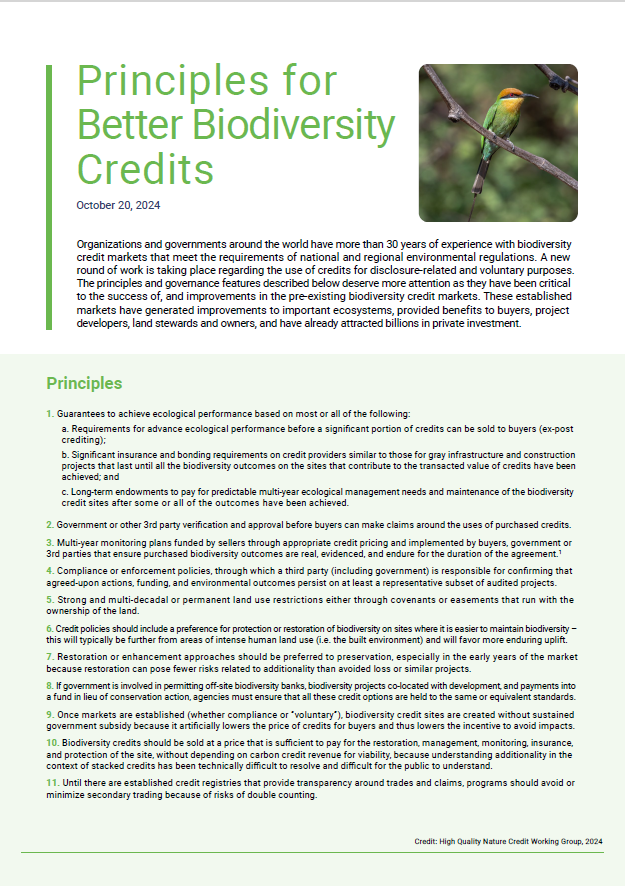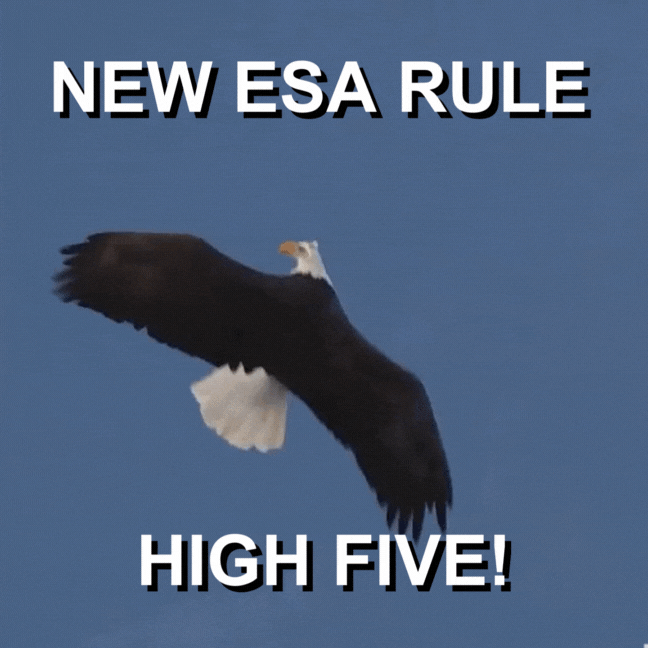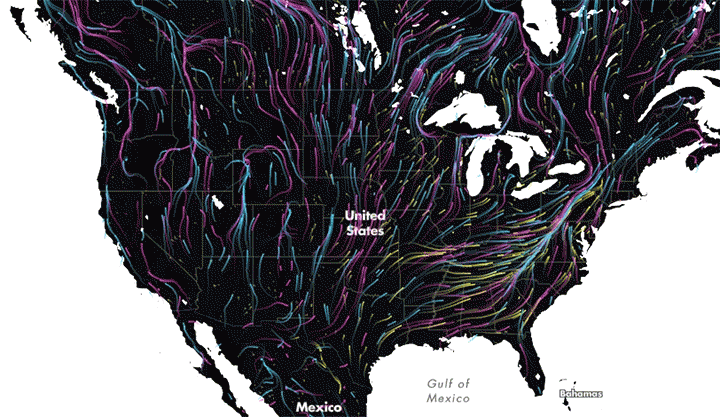Building a Climate-Effective Wildlife Law
America’s Endangered Species Act (ESA) was written in the 1970s and has not seen a major update since 1988. Although the law remains important and useful for wildlife conservation, some provisions offer, at best, a dull tool to address climate change, drought, and other intractable threats to wildlife that are outpacing conservation efforts.
The Biden Administration should be investing heavily in three core strategies around climate and endangered species: 1) updating tools that are relevant to helping species adapt to their shifting ranges and habitat conditions, 2) speeding up absolutely everything that wildlife agencies do with major process improvements, and 3) accelerating permitting decisions and government investment in renewable energy (and transmission) offsets so that deployed renewable energy can prevent species from being killed (indirectly) by continued massive fossil fuel emissions. You can find more of our recommendations here and on permitting here, but to summarize:
Our Assumptions
The worst effects of climate change and increased resource use from a growing population will happen in the next 50-100 years. Afterwards, progress on technological, socioeconomic, and other areas will make it easier to stabilize and recover what we have kept around until then.
Habitats are moving. Species that cannot move on their own won’t survive without our help.
Climate change is happening too fast to plan and study every scenario for each species’ future. Unless we adopt ways to act fast on extremely limited information about how our actions affect wildlife, conservation decision-making will doom wildlife.
Whenever species conservation depends not on stopping a harmful action but on encouraging a beneficial action, positive incentives are the only tools that will consistently deliver success.
Inaction and slow decisions kill endangered species – we should not assume they are precautionary approaches. For example, each gigawatt of renewables likely helps save 42 species from extinction.
Our Initiatives
Publications
Blogs
Ten Recommendations for the Biden Administration
-
More translocations.
We need to make it much easier to translocate species through a national policy on translocations, standardized rules that facilitate translocations, and more emphasis and funding for ESA plant translocations. The regulatory process for this critical work has to be easier, as does its social acceptability within the conservation community.
-
Actually organize staff and partners as if its an emergency room.
Dozens to hundreds of species now and in the future need a real emergency room—a rapid response team of the most experienced and creative conservationists within the U.S. Fish and Wildlife Service (FWS) and the National Marine Fisheries Service (NMFS), with a dedicated budget and leadership support to implement strategies that aren’t happening under business-as-usual conservation but have a chance of saving rapidly declining species. We need something more like a rapid response force, of federal, state, nonprofits, and businesses to do whatever it takes in conservation actions to save species that are close to blinking out despite other efforts.
-
Manage stable species differently.
There are many species that we can save from extinction but not recover and delist at present time. We need better ways to recognize these species, create new incentives to conserve them even when delisting is impossible, and measure interim conservation success using benchmarks other than delisting and downlisting. We also need to develop new ways to think about funding the conservation of species facing intractable threats that cannot be adequately ameliorated through current conservation techniques.
-
Budget for success.
The FWS and NMFS endangered species budget process needs to be rebuilt such that it is intentionally and transparently designed to maximize the amount of biodiversity conserved, especially the number of extinctions prevented. Continuing the current approach in which a minority of species get the majority of funding will lead to more lost opportunities to increase the number of extinctions prevented, species stabilized, and recoveries achieved.
-
Minimize time wasted rescinding Trump regulations.
Given the controversy surrounding changes in 2019 and 2020 to endangered species policies for listing, critical habitat, and section 7 consultations, many stakeholders will continue pressing the Administration to rescind all changes. We know that many of these changes were proposed by Services career staff seeking to improve the clarity and consistency of ESA decisions and encourage the agencies to take a tailored approach, keeping the vast majority of staff-recommended minor changes.
-
Rebuild net zero or net benefit mitigation policies.
In 2016, USFWS finalized its first-ever mitigation policy that covers all of the agency’s trust species, including ESA species. The policy provides principles, a framework, recommendations, and other very useful information to guide how mitigation programs should be developed and implemented. Unfortunately, the Department of the Interior rescinded the policy in 2018 based on objections to its goal of creating a net benefit or no net loss for trust species—even though this goal is precisely what’s needed for the ESA to succeed and aligns with the ESA’s statement of purpose.
-
Operationalize a standardized approach to ‘foreseeable future.’
The Services’ 2019 definition of “foreseeable future” sparked considerable pushback, including accusations that the definition would allow the agencies to downplay climate change. We don’t believe the previous and new standards are actually different. Whatever the case, the best way to address the concerns about the new definition is for the Services to develop guidance on how they will interpret the “foreseeable future.”
-
Speed up and incentivize renewables permitting.
Agencies should efficiently issue permits for priorities that produce major ecological benefits – federal wildlife agencies should embrace doing so as its one of their most powerful roles in preventing future extinctions. At the director level setting goals around permit timelines for ecologically beneficial work could help motivate new ways of managing permitting processes.
-
Species conservation (mitigation) banks.
We strongly support FWS regulations that would make this a preferred form of compensatory offsets, as is the case under the Clean Water Act. Two of the most unappreciated reasons for doing so: 1) it ensures that offsets are fairly priced and that those prices will sometimes incentivize avoidance of important habitat versus offsets and 2) businesses that provide offsets subsequently become strong advocates for strong enforcement of regulations requiring mitigation.
-
Show your love for biodiversity.
If staff and leadership at America’s wildlife agencies wake up every day inspired by the mission to save the biodiversity of the Earth from the extreme threats of the next 50 years, it doesn’t feel like it. It occurs to us that in two decades of listening to and meeting with FWS or NMFS regional directors and national directors, we’ve rarely or never heard one give remarks that conveys a powerful love of wildlife. The average American loves wildlife conservation almost as much or more than any other governmental conservation mission. Speak from the heart about your love of wildlife, about how many exciting solutions there are to save species, and how you want to embrace innovation and experimentation so we can speed up our solutions to this crisis.



























